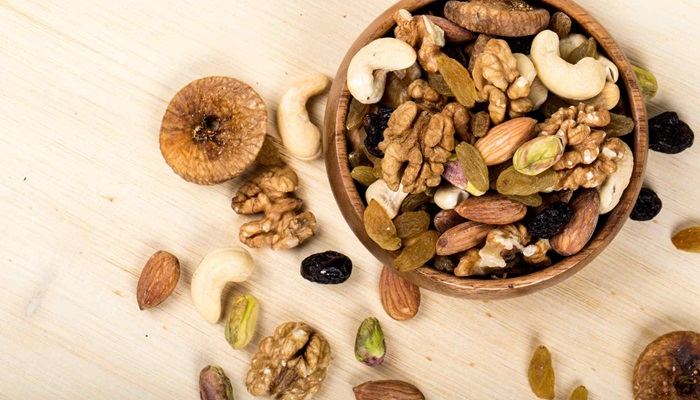Dry fruits, often overlooked in the rush for quick fixes, are a powerhouse for healthy weight gain. Rich in essential nutrients, they provide a concentrated source of calories and energy without adding unhealthy fats. Today, we invite you on a nutritional journey to explore which dry fruits are best for weight gain, providing detailed insights into their benefits, usage, and cultural significance.
The Cultural Significance
A Reflection of Tradition
Dry fruits have been part of human diets for centuries, symbolizing abundance and health. In many cultures, they are offered as gifts during festivals and celebrations, representing prosperity and longevity. This tradition underscores the value placed on nutrition and well-being in various societies.
Symbol of Health and Strength
In traditional medicine, dry fruits are often recommended for their ability to nourish the body and promote strength. They are believed to enhance vitality and support overall health. This belief highlights the importance of natural, nutrient-rich foods in maintaining a balanced lifestyle.
Essential Dry Fruits for Weight Gain
Preparing Your Kitchen
To incorporate dry fruits effectively into your diet for weight gain, consider the following options:
Dates: Naturally sweet and rich in fiber, vitamins, and minerals.
Raisins: Small but packed with iron and antioxidants.
Prunes: High in dietary fiber and beneficial for digestive health.
Apricots: Contain beta-carotene and potassium, promoting heart health.
Figs: Excellent sources of calcium and magnesium.
Almonds: Rich in healthy fats, protein, and vitamin E.
Walnuts: Packed with omega-3 fatty acids and antioxidants.
Pistachios: Provide protein, fiber, and healthy fats.
Cashews: Offer magnesium and monounsaturated fats.
Prepping Ahead
Before starting, prepare all ingredients. Soak dried fruits like apricots and figs overnight to soften them. Having everything ready ensures a smooth integration into meals and snacks.
Step-by-Step Guide to Incorporating Dry Fruits
Adding Dry Fruits to Meals
Breakfast Boost: Add chopped dates, raisins, or prunes to oatmeal, yogurt, or cereal. These fruits add natural sweetness and fiber, making breakfast more nutritious and filling.
Mid-Morning Snack: Enjoy a handful of almonds, walnuts, or pistachios. These nuts provide a satisfying crunch and a boost of healthy fats and proteins.
Lunch Addition: Include sliced dried apricots or figs in salads or wraps. Their sweetness complements savory flavors and adds texture.
Afternoon Treat: Blend soaked apricots or figs into smoothies. This creates a creamy, nutrient-dense drink that can be enjoyed as a snack or light meal.
Dinner Delight: Sprinkle chopped dried fruits over roasted vegetables or mix them into rice dishes. This enhances flavor and provides additional nutrients.
Creating Dry Fruit Recipes
Energy Balls: Combine ground almonds, cashews, dates, and a touch of honey. Roll into balls and refrigerate for a quick, energy-packed snack.
Trail Mix: Mix together almonds, walnuts, pistachios, raisins, and dark chocolate chips. Store in an airtight container for easy access throughout the day.
Baked Goods: Fold dried fruits into muffin or bread batter. This adds moisture and natural sweetness, reducing the need for added sugars.
Sweet Desserts: Make homemade granola bars using oats, honey, and a variety of dried fruits. Bake until golden for a delicious treat.
Enhancing the Experience
Pairing Dry Fruits with Other Foods
Proteins: Pair dry fruits with lean meats, eggs, or tofu for a balanced meal.
Vegetables: Combine them with leafy greens, carrots, or bell peppers for a colorful salad.
Grains: Mix them into quinoa, brown rice, or barley dishes for added flavor and nutrition.
Drinks Pairing
Choose drinks that complement the richness of dry fruits. A glass of warm milk or almond milk can help soothe the palate. Herbal teas like chamomile or peppermint also offer a soothing contrast to the sweetness of the fruits.
Conclusion: A Culinary Masterpiece
In conclusion, incorporating dry fruits into your diet is more than just a way to gain weight; it’s embracing a healthier lifestyle. By choosing the right dry fruits, preparing them effectively, adding them to meals, creating recipes, and pairing them with other foods, you can achieve healthy weight gain while enjoying delicious and nutritious treats.
Each step of the process, from selecting ingredients to final touches, contributes to the final result—a balanced and flavorful diet that promotes well-being. Serve dry fruits with care, paired with complementary sides and drinks, and you have a meal that brings people together, fostering connections and shared moments.
Through this guide, you not only learn how to incorporate dry fruits for weight gain but also gain insight into their cultural significance. So, gather your ingredients, roll up your sleeves, and embark on this nutritional adventure. Enjoy the journey of flavors and the joy of sharing healthy meals with loved ones. Happy cooking!
By mastering the art of using dry fruits for weight gain, you open a door to a world of flavors and traditions. Whether enjoyed as a snack or part of a balanced meal, these fruits offer a taste of history and innovation, inviting everyone to savor the beauty of culinary heritage. Each bite reflects the principles of simplicity, balance, and harmony that define healthy eating, reminding us of the joys of nourishing our bodies and sharing food with others.
Related topics:


